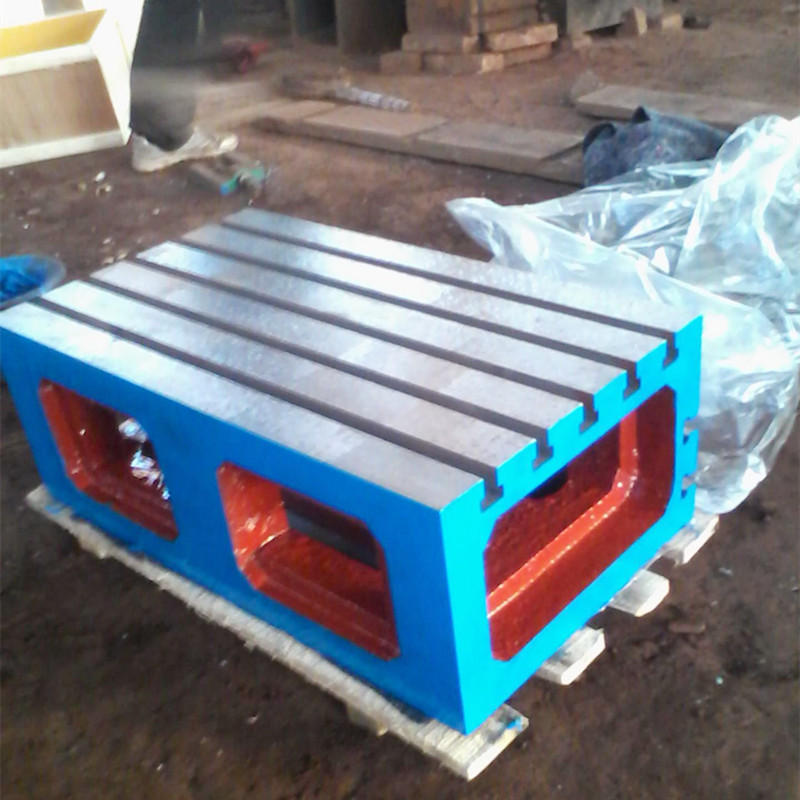ಡಿಸೆ . 11, 2024 02:09 Back to list
Inspection Techniques for Surface Plates in Precision Measurement Applications
The Importance of Inspection Surface Plates in Quality Control
In the realm of manufacturing and engineering, precision is paramount. Everyday, components and materials are subjected to a rigorous evaluation process to ensure they meet the required specifications and quality standards. One of the most fundamental tools employed in these inspections is the inspection surface plate. This seemingly simple yet crucial instrument plays a vital role in the quality control processes of various industries.
What is an Inspection Surface Plate?
An inspection surface plate is a flat, highly accurate surface used as a reference plane for precision measurements. Typically made from materials like granite, cast iron, or glass, these plates are engineered to provide a stable and level surface that can accommodate a variety of measuring instruments, such as calipers, micrometers, and dial indicators. The accuracy of the surface plate is essential, as it serves as the baseline from which measurements are taken.
Material Considerations
Granite is the preferred material for many inspection surface plates due to its inherent properties. It is non-porous, resistant to wear and corrosion, and provides excellent thermal stability. This means that dimension changes resulting from temperature fluctuations are minimal, ensuring consistent accuracy over time. Cast iron, on the other hand, is also popular because of its durability and ease of manufacture, but it may require extra maintenance to prevent rust and distortion.
Applications in Various Industries
Inspection surface plates are indispensable in a multitude of sectors including aerospace, automotive, electronics, and metalworking. In the aerospace industry, for example, the need for precision is critical, as even the smallest deviation could result in severe consequences. Here, inspection surface plates are used to verify the dimensions of complex components like turbine blades and structural frames.
inspection surface plate

In automotive manufacturing, these plates support the inspection of parts such as engine components and chassis assemblies. Any inaccuracies detected during inspections can lead to costly rework, production delays, or product recalls. Thus, the use of an inspection surface plate can help minimize these risks and enhance product quality.
Quality Control Process
The quality control process typically involves several steps, where inspection surface plates are used throughout. Initially, components are placed on the plate to conduct first-article inspections, ensuring they meet design specifications. Regular audits are carried out using the surface plates to verify ongoing accuracy and adherence to standards. Any discrepancies found during these inspections prompt immediate corrective actions.
Implementing thorough inspection protocols using these plates not only leads to higher quality products but also fosters a culture of continuous improvement within organizations. Ultimately, the reliability of inspection surface plates contributes significantly to maintaining customer satisfaction and upholding brand reputation.
Maintenance of Inspection Surface Plates
While inspection surface plates are designed for durability, proper maintenance is essential to ensure their longevity and accuracy. Routine inspections for wear and surface scratches should be conducted, and any imperfections should be corrected promptly. Additionally, the plates should be regularly cleaned, and a controlled environment should be maintained to prevent contamination and minimize the risk of thermal expansion.
Conclusion
In summary, inspection surface plates are integral to the quality control processes across a variety of industries. Their precision, durability, and reliability make them essential tools in the pursuit of perfection in manufacturing. As technology continues to evolve, so too will the methods of measurement and inspection; however, the foundational role of inspection surface plates in ensuring quality will remain undeniable. Investing in high-quality inspection surface plates and adhering to best maintenance practices is fundamental to achieving accuracy and efficiency in any production environment.
-
Why Metric Trapezoidal Thread is Ideal for Precision Motion ControlNewsAug.05,2025
-
The Unique Properties of a Block of Granite for Industrial UseNewsAug.05,2025
-
The Role of Flanged Y Strainers in Preventing Pipeline ClogsNewsAug.05,2025
-
The Importance of Regular Calibration for Master Ring GagesNewsAug.05,2025
-
How a Cast Iron Surface Table Enhances Accuracy in ManufacturingNewsAug.05,2025
-
Comparing Different Check Valve Types for Optimal Flow ControlNewsAug.05,2025
Related PRODUCTS









